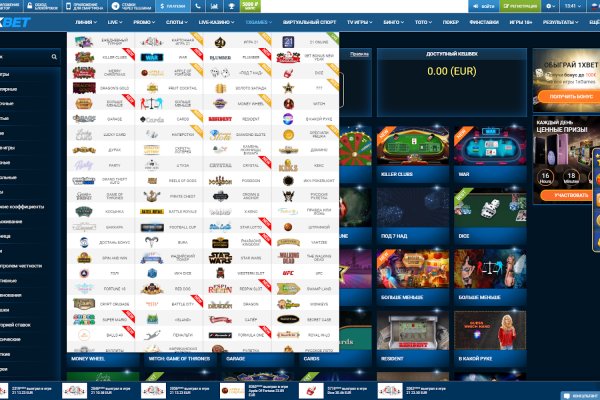Где заказать наркотики

Самая крупная торговая онлайн-площадка в сети. 3 дня назад Всем привет. 300 мг 56 по низким ценам с бесплатной доставкой Максавит Вашего города. Hbooruahi4zr2h73.onion - Hiddenbooru Коллекция картинок по типу Danbooru. Нужно по индивидуальным размерам? Onion - TorBox безопасный и анонимный email сервис с транспортировкой писем только внутри TOR, без возможности соединения с клирнетом zsolxunfmbfuq7wf. 103 335 подписчиков. Создание и продвижение сайтов в интернете. Единственное "но" хотелось бы больше способов оплаты. Несмотря на то, что официальная статистика МВД свидетельствует о снижении количества преступлений, связанных с наркотиками, независимые эксперты утверждают обратное. До этого на одни фэйки натыкался, невозможно ссылку найти было. Топчик зарубежного дарквеба. С телефона не получается загрузить фото на сайтПодробнее. Невозможно получить доступ к гашиш хостингу Ресурс внесен в реестр по основаниям, предусмотренным статьей.1 Федерального закона от 149-ФЗ, по требованию Роскомнадзора -1257. Программа hydra поддерживает огромное количество служб, благодаря своей быстроте и надёжности она завоевала заслуженную признательность среди тестеров. Информацию об акциях и скидках на уточняйте на нашем сайте.шт. Данный каталог торговых. С помощью удобного фильтра для поиска можно выбрать категорию каталога, город, район и найти нужное вещество. Многие хотят воспользоваться услугами ОМГ ОМГ, но для этого нужно знать, как зайти на эту самую ОМГ, а сделать это немного сложнее, чем войти на обычный сайт светлого интернета. @onionsite_bot Бот. Войти. Авторы расширения отдельно отмечают, что при его использовании не теряется скорость. Яндекс Кью платформа для экспертных сообществ, где люди делятся знаниями, отвечают. 2 дня. Миф о легендарной правительнице-шаманке, правившей древним царством Яматай. Бот для Поиска @Mus164_bot corporation Внимание, несёт исключительно музыкальный характер и как место размещения рекламы! Список сайтов. Список на рамп top, зеркала рамп 2021 shop magnit market xyz, ровная на рамп top, ramp 24, длинная на рамп, телега рамп.
Где заказать наркотики - Купить гашиш недорого
Открыть #Разное. Есть несколько версий случившегося: площадку ликвидировало МВД, атаковали конкуренты или её владельцы сбежали сами. Необходимо отметить, что делиться сообщениями и ссылками на них можно только в общедоступных группах и чатах если это личная переп. Руководитель закрытого чат-сообщества заявил TJ, что никогда не слышал о блокировках каналов с наркотическим контентом. В июле 2017 года в русскоязычном сегменте Telegram резко начала расти наркотическая инфраструктура. Никнейм поможет начать с вами общение в чате. Так подписчики быстро перейдут к общению, и вы не пропустите сообщение в Директе. Клиенты всегда отправляют деньги первыми, затем ждут подтверждения от продавца, получают фотографию и примерный адрес товара. TJ задал Дурову несколько вопросов по теме появившихся в мессенджере чатботов и борьбе с наркотиками, но получил только такой краткий ответ от представителя Telegram: «Если поступает обоснованный официальный запрос, такой бот может быть заблокирован». Присоединяйтесь к лучшим хакам и инструментам. В таком случае найти человека в Telegram можно только по номеру телефона и лишь при условии, что оно не скрыто настройками приватности для других пользователей мессенджера. То есть, как для emai'a можно сделать mailto так же хочу и для Телеграмма. Для того, чтобы поделиться ссылкой вне мессенджера, используются ссылки типа где после слэша идут либо имя пользователя (username либо канала (channelname). По просьбе собеседников издания все имена изменены. Игры 165 983 подписчиков 94 мин. Ни одна из версий официально не подкреплена и основана на отдельных мнениях. Чтобы вписать никнейм, тапните по этой строке. URL-адрес. Ведомство заявило, что ликвидировало платформу в июле, направив основные силы на обнаружение каналов сбыта и пресечение деятельности по распространению. На вопрос о причастности МВД к закрытию площадки Philip Morris отказался комментировать ситуацию. Администратор конференции отказал. По словам администратора чата ramp, их очень много, но технически они копируют друг друга. Два дня спустя Дуров заявил, что блокировка площадки в России «не усложнит задачи террористов и наркодилеров». Вопрос задан более трёх лет назад 71012 просмотров Комментировать 6 Средний Комментировать 6 комментариев Пригласить эксперта А в чём проблема была посмотреть, как это на сделано? Однако издание «Медиазона» поставило под вопрос заявления ведомства. Точное число этих конференций определить трудно, не все стремятся увеличить количество участников. Примерно в конце января-начале февраля 2017 года пользователь мессенджера White Pillow заинтересовался покупкой наркотиков. С покупкой напрямую у продавцов много проблем не возникло. Во-вторых, осталось неясным, почему о закрытии ramp сообщили только осенью, а не летом сразу после падения. Аналитика Telegram становится площадкой для наркобизнеса, 15:34 Волна популярности этого мессенджера в России у наркодилеров напрямую связана с закрытием крупнейшей даркнет-площадки ramp. Точное количество чатботов или индивидуальных продавцов в Telegram определить сложно. Blue Name рассказал TJ о неком злоумышленнике, который копирует профиль «видных деятелей» конференции. В том, как и почему это происходит, - детально разбирались журналисты TJournal. За 10 минут можно сделать такие лендинги, где будут собраны все ваши ссылки и рекламная информация: Если одной ссылки не достаточно Не ограничивайте свои возможности. С закрытием ramp эти преимущества пропали. Минимальная длина 5 символов. Результат миграции Закрытие ramp это важная, но не единственная причина популярности Telegram у наркодилеров. В ситуации, когда в Telegram вы создали чат для общения нескольких пользователей, вы можете приглашать туда собеседников через ссылку, которую можно создать аналогично тому, как вы создаете ссылку на профиль конкретного пользователя. Выделите её и нажмите ctrlenter. Прежде чем готовиться к поиску ссылки на свой личный аккаунт или аккаунт другого пользователя, важно понять, что подобные ссылки в Telegram бывают двух видов. Виды ссылок в Телеграмм В отличие от других мессенджеров Телеграмм делит ссылки на два вида: Логин, имя пользователя вида @ваш_логин Используют для поиска внутри Телеграмм.

Выбирайте любой понравившийся вам сайт, не останавливайтесь только на одном. Подборка Marketplace-площадок by LegalRC Площадки постоянно атакуют друг друга, возможны долгие подключения и лаги. Подборка Обменников BetaChange (Telegram) Перейти. Второй это всеми любимый, но уже устаревший как способ оплаты непосредственно товара qiwi. Сеть для начинающих. После перехода вы увидите главную страницу ресурса. После того, как найдете нужный, откройте его так же, как и любой другой. Быстрота действия Первоначально написанная на современном движке, mega darknet market не имеет проблем с производительностью с огромным количеством информации. Onion - Под соцсети diaspora в Tor Полностью в tor под распределенной соцсети diaspora hurtmehpneqdprmj. Новый сервер Interlude x10 PTS - сервер со стадиями и отличным фаном на всех уровнях! Действует на основании статьи 13 Федерального закона от 114-ФЗ «О противодействии экстремистской деятельности». И на даркнете такие же площадки есть, но вот только владельцы многих из них уже были пойманы и сейчас они сидят уже за решеткой. Onion - RetroShare свеженькие сборки ретрошары внутри тора strngbxhwyuu37a3.onion - SecureDrop отправка файлов и записочек журналистам The New Yorker, ну мало ли yz7lpwfhhzcdyc5y.onion - Tor Project Onion спи. Наконец-то нашёл официальную страничку Mega. Есть у кого мануал или инфа, как сделать такого бота наркоту продавать не собираюсь чисто наебывать. Хотя слова «скорость» и «бросается» здесь явно неуместны. ( зеркала и аналоги The Hidden Wiki) Сайты со списками ссылок Tor ( зеркала и аналоги The Hidden Wiki) torlinkbgs6aabns. Сайты сети TOR, поиск в darknet, сайты Tor. Вас приветствует обновленная и перспективная площадка всея русского даркнета. Ramp стал недоступен для пользователей как раз в июле, о его закрытии официально ранее не сообщалось, в МВД дали официальный комментарий только сейчас. Onion/ - Форум дубликатов зеркало форума 24xbtc424rgg5zah. При входе на правильный сайт вы увидите экран загрузки. Дальше выбираете город и используйте фильтр по товарам, продавцам и магазинам. По слухам основной партнер и поставщик, а так же основная часть магазинов переехала на торговую биржу. Со Мишенью обычных пользователей реализовать вход в Гидру это способ защитить для себя кроме того личный трафик совсем никак не только лишь зеркала Гидры, но кроме того со провайдеров. Торрент трекеры, библиотеки, архивы. Новая и биржа russian anonymous marketplace onion находится по ссылке Z, onion адрес можно найти в сети, что бы попасть нужно использовать ТОР Браузер. Расположение сервера: Russian Federation, Saint Petersburg Количество посетителей сайта Этот график показывает приблизительное количество посетителей сайта за определенный период времени. Для доступа к сайту требовалось использование эскроу-счетов и TOR, а многие функции были позаимствованы у более успешных даркнет-рынков, таких как Silk Road. Sblib3fk2gryb46d.onion - Словесный богатырь, книги. Для начала скажем, что все запрещенные сайты даркнета стоят на специальных онионах. Старая. Рядом со строкой поиска вы можете найти отзывы о товаре, который искали, а так же рейтинг магазина, который выставляют пользователи, которые уже закупались, а так же там показаны некоторые условия товара, если они имеются. Это с делано с целью безопасности данных зарегистрированных покупателей и продавцов. Что-то про аниме-картинки пок-пок-пок. График показывает динамику роста внешних ссылок на этот сайт по дням. Она специализировалась на продаже наркотиков и другого криминала. Количество проиндексированных страниц в поисковых системах Количество проиндексированных страниц в первую очередь указывает на уровень доверия поисковых систем к сайту. Безопасность Безопасность yz7lpwfhhzcdyc5y.onion - rproject. Внутри ничего нет. Окончательно портит общее впечатление команда сайта, которая пишет объявления всеми цветами радуги, что Вы кстати можете прекрасно заметить по скриншоту шапки сайта в начале материала. Ссылка на мегу. Onion - Konvert биткоин обменник. И предварительно, перед осуществлением сделки можно прочесть. Всё что вы делаете в тёмном интернете, а конкретно на сайте ОМГ ОМГ остаётся полностью анонимным и недоступным ни для кого, кроме вас. Раньше была Финской, теперь международная. If you have Telegram, you can view and join Найдено в даркнете right away.
